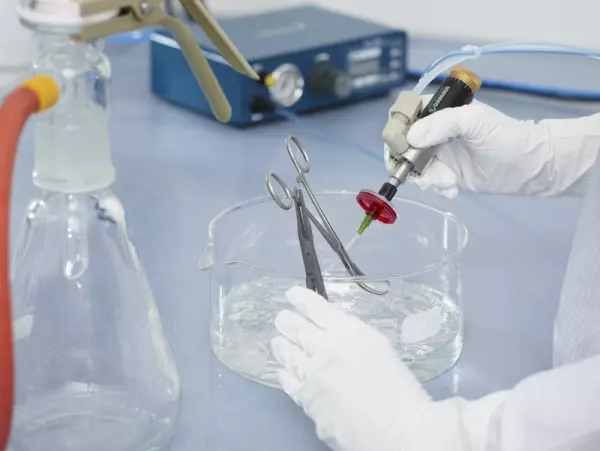
Particulate cleanliness in medical technology
Particulate contamination of the products is also becoming increasingly important in medical technol...
Portal and digital medical technology fair of the largest MedTech cluster in Germany

Particulate cleanliness in medical technology
Particulate contamination of the products is also becoming increasingly important in medical technol...

Particulate contamination is a big problem in the chemical industry and is particularly detrimental to the production process. Particulate contamination occurs when unwanted particles enter a product. This can be caused by faulty equipment, insecure storage areas, or human error. In order to avoid the risk of particulate contamination, it is crucial that staff handling samples are properly trained. If this isn't done, contamination is likely to occur.
Particulate contamination generally falls into two categories: intrinsic and extrinsic. Partially-visible particles, averaging a hundred micrometers (um) in size, originate from manufacturing processes or from human operators. In parenteral drug products, particulate contamination is classified as visible if it is 100 micrometers in diameter or larger. The test is designed to detect visible particles that can be seen with the naked eye and have a high probability of being contaminated.
The difficulty of particulate contamination testing comes from the fact that particles of more than 100 micrometers in diameter can be easily overlooked. Although the probability of detection of sub-visible particles is high, the probability of error in detecting them is very low. Moreover, most manufacturers of single-use components are unfamiliar with SUS pharmacopoeial testing procedures. This means that there is little or no guidance available to help the industry improve its particulate testing methods.
The most common types of particulate contamination tests are performed on raw materials. The most common types are hair, human skin, and animal fur. FTIR-microscopy is often used to determine the surface morphology of small particles. Energy dispersive x-ray analysis can also be used to identify corrosion products such as iron oxide. If a sample is contaminated with human hair, it should be identified before the production process can begin.
While particulate contamination tests are not as precise as those used in the pharmaceutical industry, they are essential for the safety and quality of pharmaceutical products. In addition to identifying the source of particulate contamination, the tests also help identify the causes of the problem. In some cases, the particle concentrations are too high, and the results are misleading. The results of a particle-based test can also affect the quality of the product.
However, there are other risks posed by particulate contamination. As particulate contamination is often invisible, it can be difficult to detect. The presence of contaminants in products is a sign of a potentially dangerous product. If you suspect contamination, you should immediately consult with a qualified health care professional. A certified healthcare provider should be able to determine if the particles present a threat. This will help prevent the patient from becoming ill and can save money on unnecessary treatments.
The new chapter 5.17.2 of the standard describes the control and visual inspection of visible particles. This chapter identifies the different sources of foreign particle contamination and highlights the importance of preventing them. It also addresses the different stages of the production process and how to test the products for the presence of particulate contaminants. Its content can be high or low depending on the product. The materials are analyzed using a particle counter to ensure their purity.
Become a digital exhibitor yourself in the online portal of the largest and best-known MedTech cluster region in Germany and inform the world of medical technology about your products and services as well as about news, events and career opportunities.
With an attractive online profile, we will help you to present yourself professionally on our portal as well as on Google and on social media.